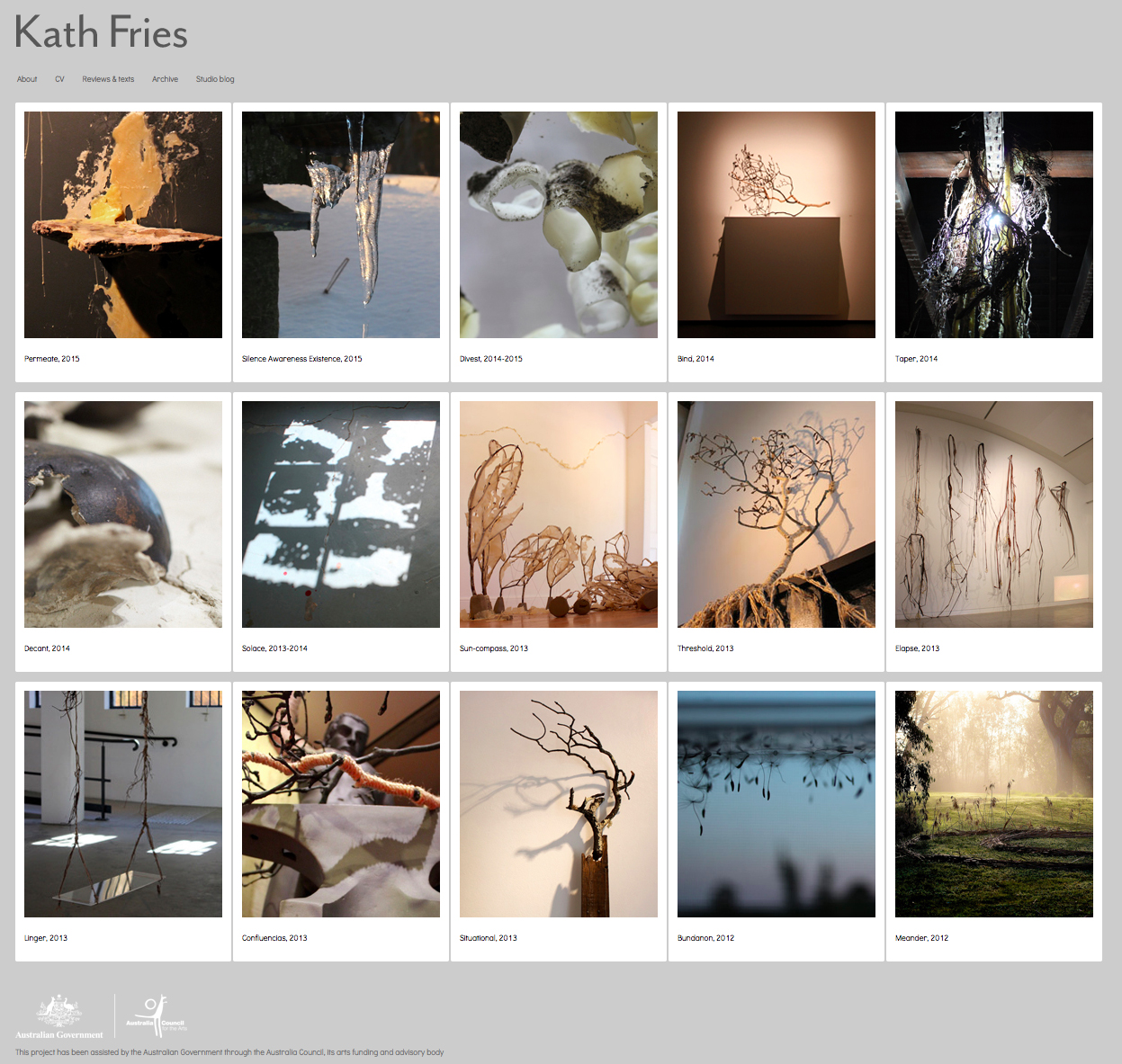 |
| Kath Fries, Bundanon studio - work in progress, 2012 |
My wombat tree stumps - nicknamed because I found them near one of the wombat tunnels outside my studio. These two tree stumps have been eaten out by white ants or termites. But all the insects have now gone - leaving behind tiny holes and tunnels in the internal wood, which is incredibly fragile and quickly crumbles under too much pressure.
 |
| Kath Fries, Bundanon studio - work in progress, 2012 |
Small pieces of wood fell out of the centres of the stumps. I collected and examined all these bits, laying them out horizontally on a neutral, flat paper surfaces in my studio. Then arranged some of the pieces in different ways, to conjure a sense of narrative about the growth, life and decay, of the tree from which they originated.
 |
| Kath Fries, Bundanon studio - works in progress, 2012 |
 |
| Kath Fries, Bundanon studio - work in progress, 2012 |
 |
| Kath Fries, Bundanon studio - work in progress, 2012 |
These small fragile pieces of wood are fascinating objects with intriguing shapes and forms. Their complex shapes suggest worlds within worlds, microcosms in disintegrating wood. Some remind me of miniature Gongshi - Chinese Scholar Rocks or viewing stones. Such large, highly valued rocks are shaped naturally and sort after for traditional Chinese gardens. Gongshi are rated according to a set of four principal aesthetic qualities: thinness shou, openness tou, perforations lou, and wrinkling zhou (reference link).
In Japan, such stones are known as Suiseki. They often look like miniatures of mountain ranges, waterfalls, or other natural features. In China, however, the preferred stones have more fantastical, cloudlike shapes, with swirls and myriad caverns. The basic art of gongshi consists of choosing a rock, positioning it in just the right way, and framing it by putting it on a stand. In addition to stone, gongshi may be made of other materials, such as roots or coral. (reference link)
 |
| Kath Fries, Bundanon studio - work in progress, 2012 |
 |
| Kath Fries, Bundanon studio - work in progress, 2012 |
 |
| Kath Fries, Bundanon studio - work in progress, 2012 |
 |
| Kath Fries, Bundanon studio - work in progress, 2012 |
 |
| Kath Fries, Bundanon studio - work in progress, 2012 |
 |
| Kath Fries, Bundanon studio - work in progress, 2012 |
 |
| Kath Fries, Bundanon studio - work in progress, 2012 |
 |
| Kath Fries, Bundanon studio - work in progress, 2012 |
 |
| Kath Fries, Bundanon studio - work in progress, 2012 |
 |
| Kath Fries, Bundanon studio - work in progress, 2012 |
The pieces of wood with flat bases, take my notions of miniature worlds into the realms of castles, forts and ruins - especially when lit from behind. I positioned some on the window ledge, to overlook the landscape of Bundanon. So the wooden objects appear to be remnants of castles with turrets and forts or disintegrating citadels, briefly glimpsed against the skyline.
 |
| Kath Fries, Bundanon studio - work in progress, 2012 |
 |
| Kath Fries, Bundanon studio - work in progress, 2012 |
 |
| Kath Fries, Bundanon studio - work in progress, 2012 |
 |
| Kath Fries, Bundanon studio - work in progress, 2012 |
 |
| Kath Fries, Bundanon studio - work in progress, 2012 |
 |
| Kath Fries, Bundanon studio - work in progress, 2012 |
 |
| Kath Fries, Bundanon studio - work in progress, 2012 |
I'm currently one of several artists-in-residence at Bundanon Trust. This artist-in-residence diary traces an important aspect of my process as I get to know the site and begin making work in response to my experience of being here.











































%2BWhite%2C%2BBRANCH%2B3d.jpg)

















.jpg)













